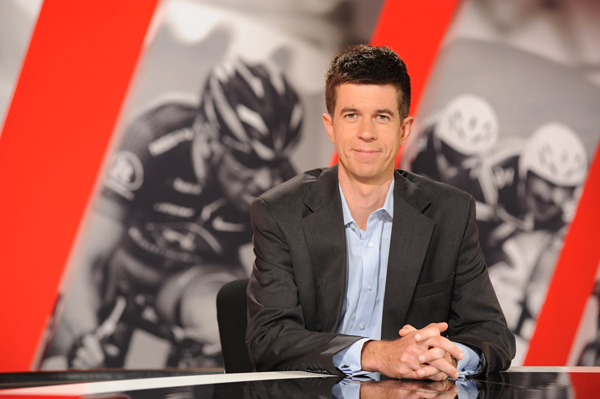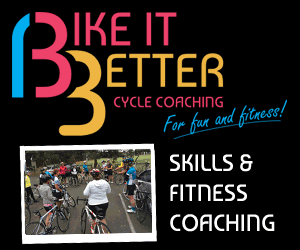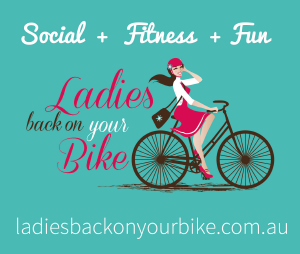Commentator, writer and Tour de France aficionado Matthew Keenan tells Melissa Heagney how dreams can come true—even if they have to change a little.
Name: Matthew Keenan
Age: 40
Job: Cycling commentator
The excitement was too much. An 8-year-old Matthew Keenan just couldn’t wait to see what Santa had left under the Christmas tree.
It was 4.30 on Christmas morning. Keenan crept from his bedroom, careful not to wake his six brothers and sisters, to take a peek at what jolly old Saint Nick had left behind.
Peering through the darkened lounge room he saw two of the most beautiful bikes his young eyes had seen. They were yellow; shining like beacons.
At first, Keenan was so excited he wanted to run screaming towards them. Then, suddenly, it dawned on him—there were two bikes.
They were obviously meant for his younger, twin brothers, not him. Tears welled in Keenan’s eyes.
“I started to cry and my mum (roused from her sleep) asked me; ‘what’s wrong?’ Keenan explains. “I said ‘I’ve been a good boy, why didn’t I get a bike’?
“Then mum switched on the light and there was another bike beside the two yellow ones. My bike was black,” Keenan laughs, “I didn’t see it.”
This was one of Keenan’s earliest memories of riding—a story of sorrow and joy—something which has become very familiar throughout Keenan’s career in cycling.
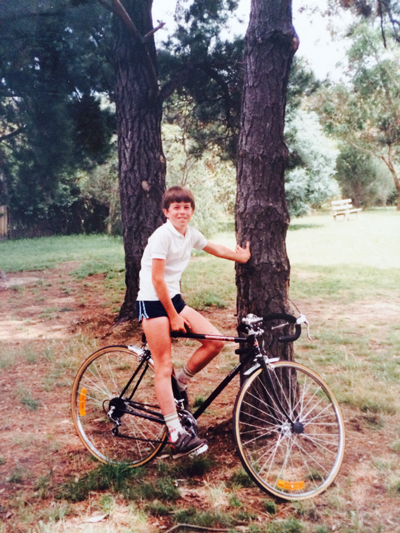 Growing up in Rosanna in Melbourne’s northern suburbs, Keenan says his bike was his independence. It allowed him to ride to school and to his friend’s houses. Riding was the highlight of his day and soon went from an enjoyable commute to a reason to miss school altogether to train for races.
Growing up in Rosanna in Melbourne’s northern suburbs, Keenan says his bike was his independence. It allowed him to ride to school and to his friend’s houses. Riding was the highlight of his day and soon went from an enjoyable commute to a reason to miss school altogether to train for races.
The father of Keenan’s first childhood sweetheart introduced him to track racing when he was 12—a man named Jim Fawcett—who introduced him to club racing and the idea that cycling was more than just a way to get around.
Tragically, Fawcett was killed in a collision with a bus on April 1, 1987 as he was riding to work. But his life left a deep impression on a young Keenan. “At 12 I suppose you can’t know anyone that well, or the influence they’ll have on the course of your life, but he was such a major influence,” Keenan says.
His death touched many people—including Keenan’s parents who were hesitant about letting him race his bike. It wasn’t until he was 15 that Keenan was able to convince them he could take on the cut and thrust of track cycling. In 1990 he joined the Northcote Cycling Club in Melbourne and started racing at Northcote velodrome.
For the first month he came last in every race. But, rather than be disheartened, a teenage Keenan thought this would be a great opening chapter of the book he would eventually write about winning cycling’s ultimate prize, le Tour de France. This was his dream, his goal, his obsession; it was everything he lived and breathed.
While he had the dream, there were other cyclists also at Northcote Cycling Club who also dreamed of yellow jerseys. One was a then unknown cyclist by the name of Cadel Evans.
Keenan, who is two years older than Evans, said he “sometimes” beat him when the two were teenagers. “Actually I was really good for Cadel’s confidence,” he laughs.
They would train together around the hills of Kinglake, north of Melbourne. “I remember going flat out up the hills to the top and he was this chubby-ish kid who looked like he couldn’t blow a candle out when he first started out,” Keenan says.
Things changed quickly however for Keenan who was soon overtaken by Cadel. “I knew if there was ever a hill there was no question he was going to win. He had such a talent—even back then.”
Five years after his first race, Keenan found himself competing at the top levels of cycling in Australia and on his journey to race in France. He set himself goals to ensure he had what it took to make it there. “I wanted to finish in the top 10 at the Australian Championships and win four races to justify carrying on [with my cycling career].
In 1996 he competed in the Australian Road Championships where he finished sixth overall, (he won the U23 section). He was unlucky to not make the National team that year bolstering his dream of making le Tour de France.
Full of hopes and aspirations, Keenan headed to Europe to ride with both a Dutch team and a French amateur team. This, he says, gave him a complete reality check. “In Holland in 1995 I got no results at all—I crashed out. But in France in ‘97 I managed to win two races,” he says.
Realising he wasn’t good enough to make the grade, Keenan made the tough decision to let go of his cycling dreams.
Instead, he returned to Australia. Determined to improve his Year 12 results, a 21-year-old Keenan went back to school at Northern Tafe before moving on to Deakin University to do a Bachelor of Arts in PR and Journalism.
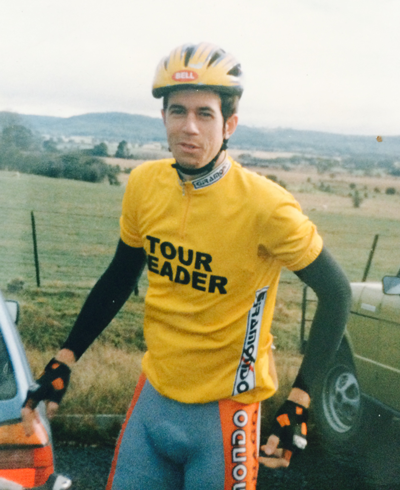 An affable Keenan soon began working as a media adviser in the corporate world. “I got a degree and a real job,” he jokes.
An affable Keenan soon began working as a media adviser in the corporate world. “I got a degree and a real job,” he jokes.
While he enjoyed work, the dream of le Tour de France and his passion for cycling still remained.
When an opportunity to volunteer as a co-commentator for Northcote Cycling Club’s track races in 2002 came up Keenan applied. He soon became the voice of the velodrome giving his incisive and fact-filled commentary of races including the Melbourne Cup on Wheels.
He was so good, that four years later, he was given an opportunity to be a TV commentator at the 2006 Commonwealth Games in Melbourne.
Being his first big TV job, Keenan says he was nervous. “I was like Denis Denuto in that movie ‘The Castle’ in the scene when he goes to the High Court—‘I was sh***ing myself’,” Keenan admits.
It was through this job he came into touch with legendary le Tour de France commentators Phil Liggett and Paul Sherwan who were impressed with Keenan’s performance.
They recommended he commentate for the Tour of Qatar when they were unavailable to do the job in 2007. Later that year his long-held Le Tour de France dream was to come true—though not as a rider has he had once envisaged, he was asked to commentate.
That first Tour opened Keenan’s eyes to how big the event is. There are 1800 journalists who cover the event from across the globe. Not unlike his time at the Commonwealth Games, he was daunted and excited at the same time. “It was one of those moments where I thought—is this what I really want to do? Am I prepared to put myself out there where everyone can see my failure or success?”
Despite the doubts, Keenan went on to give his all for his first Tour. “The first couple of days I was terrible—but then I pretended that I was at a local bike race—and it was handy to have people I know there—like Cadel—because I [would] think ‘this is just a bloke who rode to Kinglake’,” Keenan says.
Like anyone in front of a camera, Keenan says there was a lot of feedback from cycling fans. He says social media is usually filled with ‘Who is this guy? Where are Phil and Paul?’
“I select the people I get feedback from,” Keenan says. “My wife gives honest feedback even though she’s not really into cycling.”
Keenan also speaks to other people he has worked with in Australian media. “You don’t get much feedback from the TV stations you work for—the only feedback you do get is if you get invited back or not,” he says.
Keenan is now a full-time commentator with his Le Tour de France coverage (and other races) now seen by English speaking countries from England to South Africa and everywhere in between.
Keenan says the key thing about being a good commentator is to be prepared and “be yourself.”
“The big advantage I’ve got is my passion for cycling and I keep a database on all the riders—with everything. If there’s something I can’t find on the internet I call people to get extra information—talk to journalists from their country. If I’d done this level of research in my high school years my teachers would have been very pleased,” he laughs.
Though it was his dream to ride in Le Tour, Keenan hasn’t been able to ride the course yet. He says it’s “logistically impossible” to fit a bike in the van with all people and equipment needed for the coverage. To stay fit he says he takes a skipping rope and jumps rope in car parks or wherever he gets the chance.
“The French think that’s hilarious—the guy from Australia, the jumping kangaroo—skipping,” Keenan says.
While the upside is Keenan does get to live the dream, the downside is he’s constantly on the road and away from his wife and two children. He spends more nights in a hotel bed than his bed at home—which is just one extra train station away from where he grew up.
When he does return—he enjoys getting the chance to ride one of the six bikes he owns—four road bikes; “three of which I don’t need,” a flat bar town bike with a baby seat to ferry around his children.
He still has the track bike he bought in 1990—which he calls his “vintage” racer. “If I was a hipster people would think I was cool … but I’m really not cool,” Keenan quips.
It’s a sentimental favourite which he says he’ll never race again but would like it restored so it can hang in the garage—a great memory of his dreams of winning Le Tour. “It represents a time I was discovering the sport,” Keenan says.
Like the man who inspired Keenan to ride, he is very passionate about encouraging others onto a bike.”When I started out (as a commentator) I wrote a business plan and had a mission statement ‘To infect as many people as possible with the bike bug’.”
It’s something he’s worked towards ever since through his work and being an ambassador for the cause.
Unfortunately, he hasn’t been able to convince his twin brothers to keep riding (or his four older sisters) despite the fact they got those beautiful yellow bikes. “I’m the ultimate middle child,” Keenan jokes. “It’s no wonder I have the job I do today—it’s a cry for attention.”
Ride On content is editorially independent, but is supported financially by members of Bicycle Network. If you enjoy our articles and want to support the future publication of high-quality content, please consider helping out by becoming a member.

